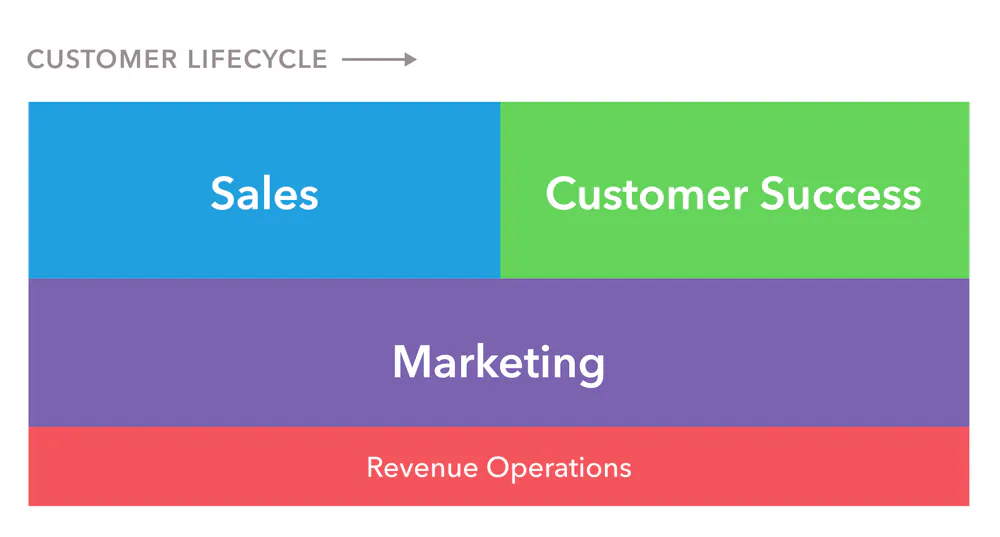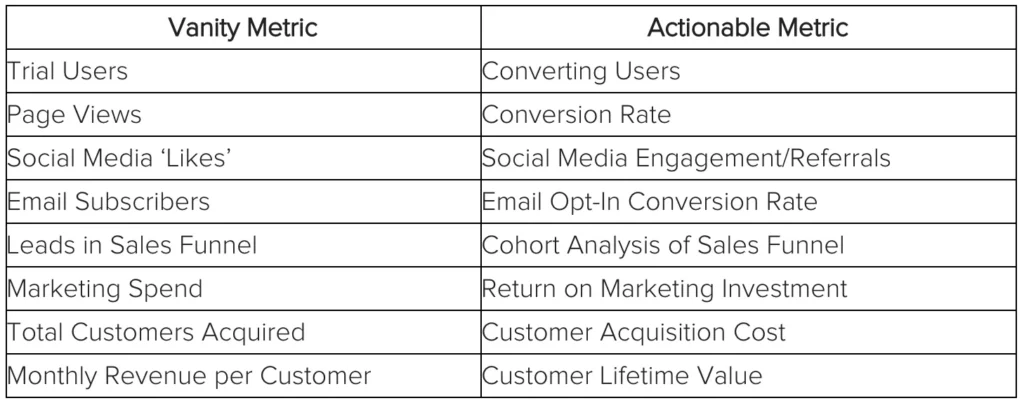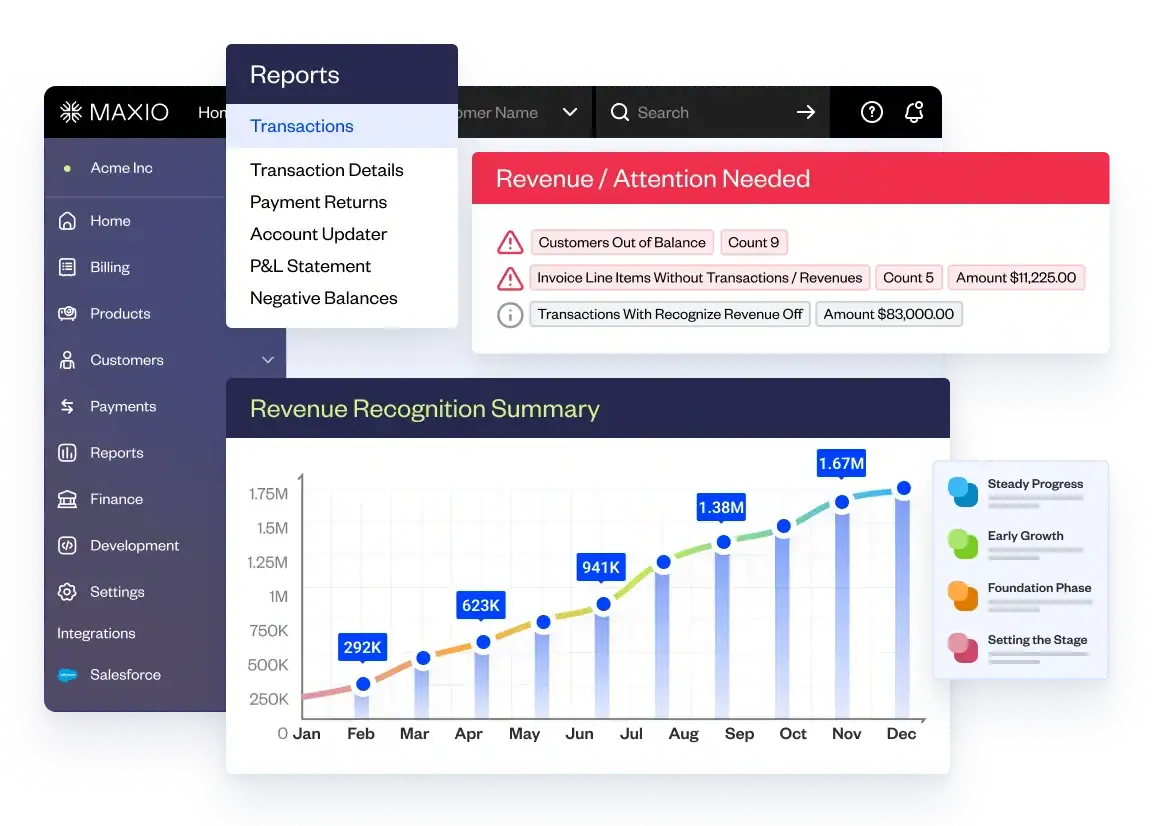As we mentioned in our article RevOps: Just Another Buzzword?, the popularity of RevOps is skyrocketing, illustrated by its increasingly prevalent job postings.
But RevOps — which aims to drive growth through operational efficiency across the entire customer lifecycle — is still a fairly new concept for some SaaS businesses.
And because RevOps is so new, there’s no single go-to method for businesses to follow when embracing the RevOps model.
RevOps might look a little different from one company to the next, and each company needs to find its own way.
However, companies adopting a RevOps approach should take still take extra care to avoid the following common mistakes:
- Underestimating what alignment requires
- Trying to “boil the ocean”
- Not giving each RevOps pillar equal weight
- Failing to get employees on board
- Not setting clear parameters for success
Underestimating What Alignment Requires
As we wrote in our post Does Your Company Need a VP of Revenue?, many companies start with RevOps at the data level.
They work to get marketing, sales and support teams using the same language, tools and measures of success — or at least looking at the same reports together. As the company grows, a dedicated RevOps department can then take shape.
Other companies start at the organizational level. They hire or promote a leader whose job is to head up all revenue-driven departments, then make that alignment their responsibility.
However, it’s not enough to just throw marketing, sales and support departments under the same functional leader. Similarly, shared tools and terminology won’t get everyone on the same page and moving toward the same goals.
RevOps won’t succeed unless data, tools, leadership and organization all play a role.
Learn more: Why RevOps is more Than Just Marketing and Sales Alignment
Trying to “Boil the Ocean”
It bears repeating: RevOps success requires both data-driven and operationally-driven tactics.
But instead of taking a “technology first” or “design first” approach, there’s a third – and in our opinion, better – option: the objective-driven approach.
Instead of trying to align everything at once, start by choosing a few major revenue blockers to eliminate.
As your team works to do that, they’ll discover which changes in tools and operations are necessary to make it happen. More alignment happens naturally as a result.
Then, you can learn from that experience and move onto the next set of revenue blockers. Revenue and growth is ever-evolving, so there will always be another RevOps goal for your team to tackle. This approach keeps your RevOps teams focused and accountable.
Not Giving Each RevOps Pillar Equal Weight
Some companies see the word “revenue” in RevOps and assume that its primary goal is to bolster sales.
There are two problems with that perspective.
First, sales is just one of the departments responsible for boosting overall revenue. Sales may perceivably have the most direct connection, but marketing and support departments play a critical role in making that revenue possible, enabling install base growth and retaining it all over time.
Each of these departments deserves equal attention and accountability toward the overall goal.
Second, a sole focus on sales can distract from a more holistic view of the entire customer experience. When this perspective is lost, it can be harder to foster the strong customer loyalty that SaaS businesses need to grow.
SaaS businesses lose ground to competitors over time if they don’t provide a cohesive, easy experience for customers. The transition of customers from marketing to sales to support must be seamless — and that requires all departments to work together more closely.
All-in-all, companies must think of RevOps as a three-legged stool. Without one of these crucial functions, the entire operation will come tumbling down.
Failing to Get Employees on Board
We all know that industry buzzwords can come and go. So, when you first start talking about RevOps, employees may be skeptical — unless you do the hard work of educating them first.
Long before any initiatives are rolled out or changes are made, employees need to understand why it’s so important to align all customer-facing and revenue-driven functions in the company. Employees should internalize what RevOps really means, both to the company as a whole and to their own careers.
This shouldn’t be too difficult. RevOps connects each employee’s individual role more directly into the overall success of the company, which can make their work more meaningful.

An example of how your RevOps framework should be structured, courtesy of FunnelCake.
Similarly, most of your employees need to understand on a basic level that when everyone works closer together, it improves the odds of each employee’s individual success – not to mention the company’s holistic success.
For example, the sales team can land more accounts when support and marketing are working to attract and retain ideal customers. And, in return, the support team has fewer unsatisfied customers as they are primarily dealing with customers that are successful with the software.
Related: Why Customer Service Should Be Involved in the Sales Process
Finally, everyone wants to put out a product that they can be proud of, and one that customers love. When all customer-facing departments work together to improve customer handoffs from one department to the next, it makes the customer experience more consistent and paves the way for valuable, long-term customer relationships.
Company leaders can get employees on board with RevOps a number of ways. They can hold all-hands meetings where the company’s RevOps approach and subsequent progress is discussed. They can host Q&A sessions and make themselves available to employees who want to ask questions. They can even keep employees updated through an internal blog or intranet.
But importantly, they can also demonstrate that alignment is important by regularly discussing progress toward goals and holding employees accountable to those goals – which brings us to…
Not Setting Clear Parameters for Success
The biggest incentives for moving to a RevOps approach include:
- providing a more consistent customer experience
- streamlining operations for more efficiency
- boosting and retaining revenue at every possible opportunity
However, those goals don’t mean much if you can’t quantify them and measure your improvement over time.
After all, you can’t know whether your RevOps efforts are working if you haven’t figured out ahead of time what you expect success to look like.
We described a few options for assessing RevOps progress in our article How to Measure the Success of RevOps at Your Saas Company.
The marketing department can still track things like A/B tests and open rates, for example. But in a RevOps model, it’s clear that if the company hasn’t improved its targeting and, therefore, added more revenue as a result of those changes, those metrics are less meaningful.
The most important metrics by far are the ones that measure success across all revenue-driven departments.

When it comes to important KPIs, it’s difficult to overemphasize the importance of Customer Acquisition Cost and Customer Lifetime Value, plus an accurate calculation of your Monthly Recurring Revenue.
Everyone on your customer-facing, revenue-driven teams should know where you stand in regards to those goals. And, they should each understand the individual role they play in reaching them.
Leaders who take RevOps seriously report on, review and evaluate these metrics regularly.
Of course, none of this is going to be easy if your billing and revenue management platform doesn’t allow you to pull the appropriate insights into your business performance and revenue generation.
Investing in a modern billing and revenue management platform is crucial to getting the insights you need to optimize your operations and revenue.
Maxio was built specifically for modern B2B SaaS. Our goal is to turn billing and subscription management form business blockers into business accelerators. Click here to learn more from one of our B2B SaaS billing experts.


